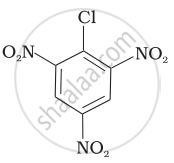Advertisements
Advertisements
प्रश्न
Out of (CH3)3 C-Br and (CH3)3 C-I, which one is more reactive towards SN1 and why?
उत्तर
In SN1 reactions, reactivity depends on the stability of carbocation after removing the leaving group form the reactant. Since the carbocation is the same here, so, we will see the tendency of leaving the group. As we can see in the following reactions Br and r are the leaving groups, out of them r is a better leaving group. Hence SN1 reaction will be faster in (CH3)3 C-I (CH3)3 - Br
\[\begin{array}{cc}
\ce{CH3}\phantom{..............}\ce{CH3}\\
\phantom{.}|\phantom{.................}|\phantom{...}\\
\ce{CH3-C-Br->CH3-C^+ + Br^-}\\
\phantom{.}|\phantom{.................}|\phantom{...}\\\ce{CH3}\phantom{..............}\ce{CH3}\\
\end{array}\]
\[\begin{array}{cc}
\phantom{...}\ce{CH3}\phantom{............}\ce{CH3}\\
\phantom{...}|\phantom{...............}|\phantom{...}\\
\ce{CH3-C-I->CH3-C^+ + I^-}\\
\phantom{...}|\phantom{...............}|\phantom{...}\\
\phantom{...}\ce{CH3}\phantom{............}\ce{CH3}\\
\end{array}\]
संबंधित प्रश्न
What happens when \[\ce{CH3 - Br}\] is treated with KCN?
Write the final product(s) in each of the following reactions:

How the following conversion can be carried out?
Chlorobenzene to p-nitrophenol
Write the product formed on reaction of D-glucose with Br2 water.
Write chemical equation in support of your answer.
Out of  Cl and
Cl and  CH2- Cl, which one is more reactive towards nucleophilic substitution reaction and why?
CH2- Cl, which one is more reactive towards nucleophilic substitution reaction and why?
Arrange the following compounds in increasing order of rate of reaction towards nucleophilic substitution.
| (a) |  |
| (b) |  |
| (c) |  |
Arrange the following compounds in increasing order of rate of reaction towards nucleophilic substitution.
| (a) |  |
| (b) |  |
| (c) |  |
Allyl chloride is hydrolysed more readily than n-propyl chloride. Why?
\[\ce{C6H12O6 ->[(Zymase)] A ->[NaOH][\Delta] B + CHI3}\]
The number of carbon atoms present in the product B is:
Why haloarenes are not reactive towards nucleophilic substitution reaction? Give two reactions.
